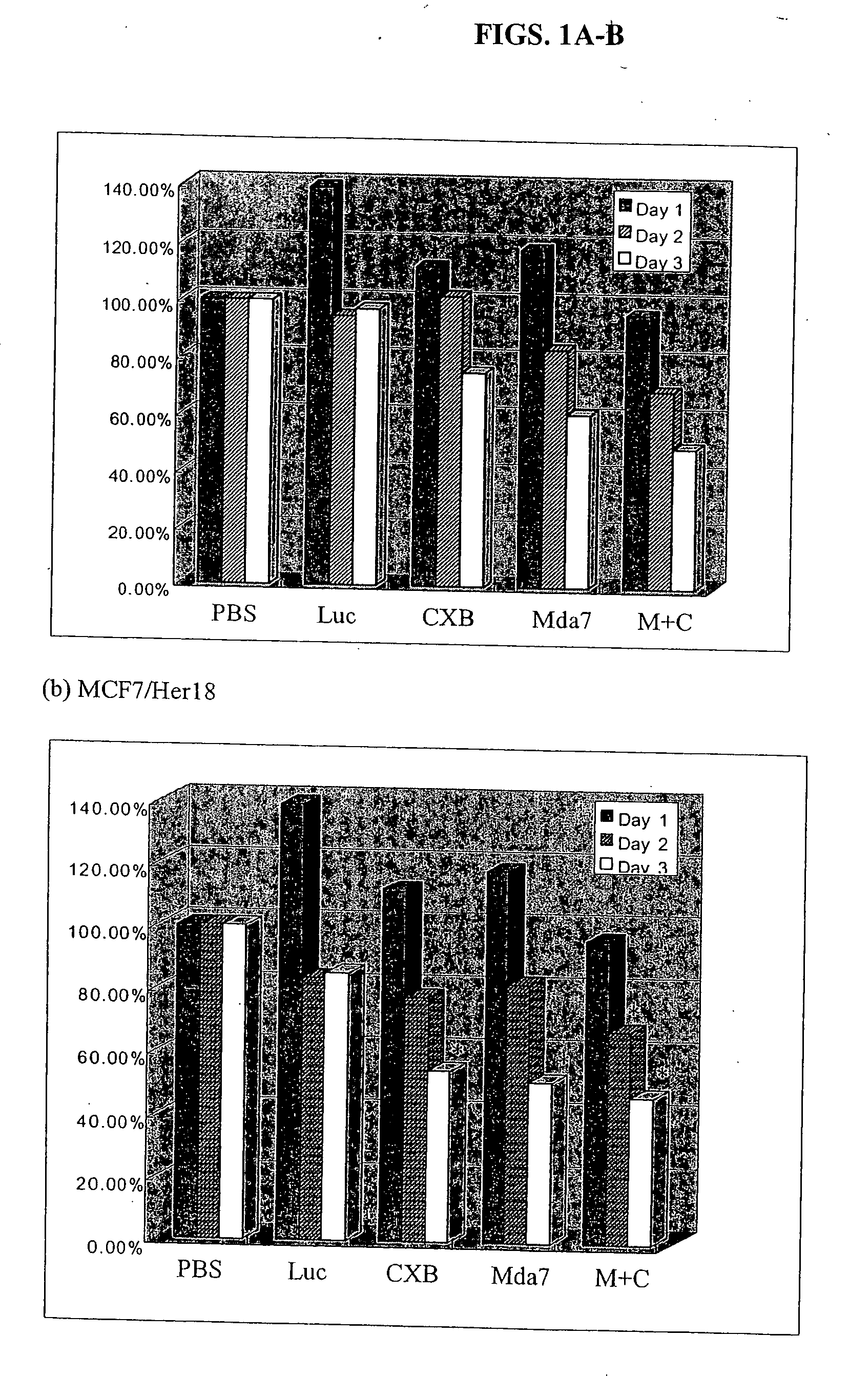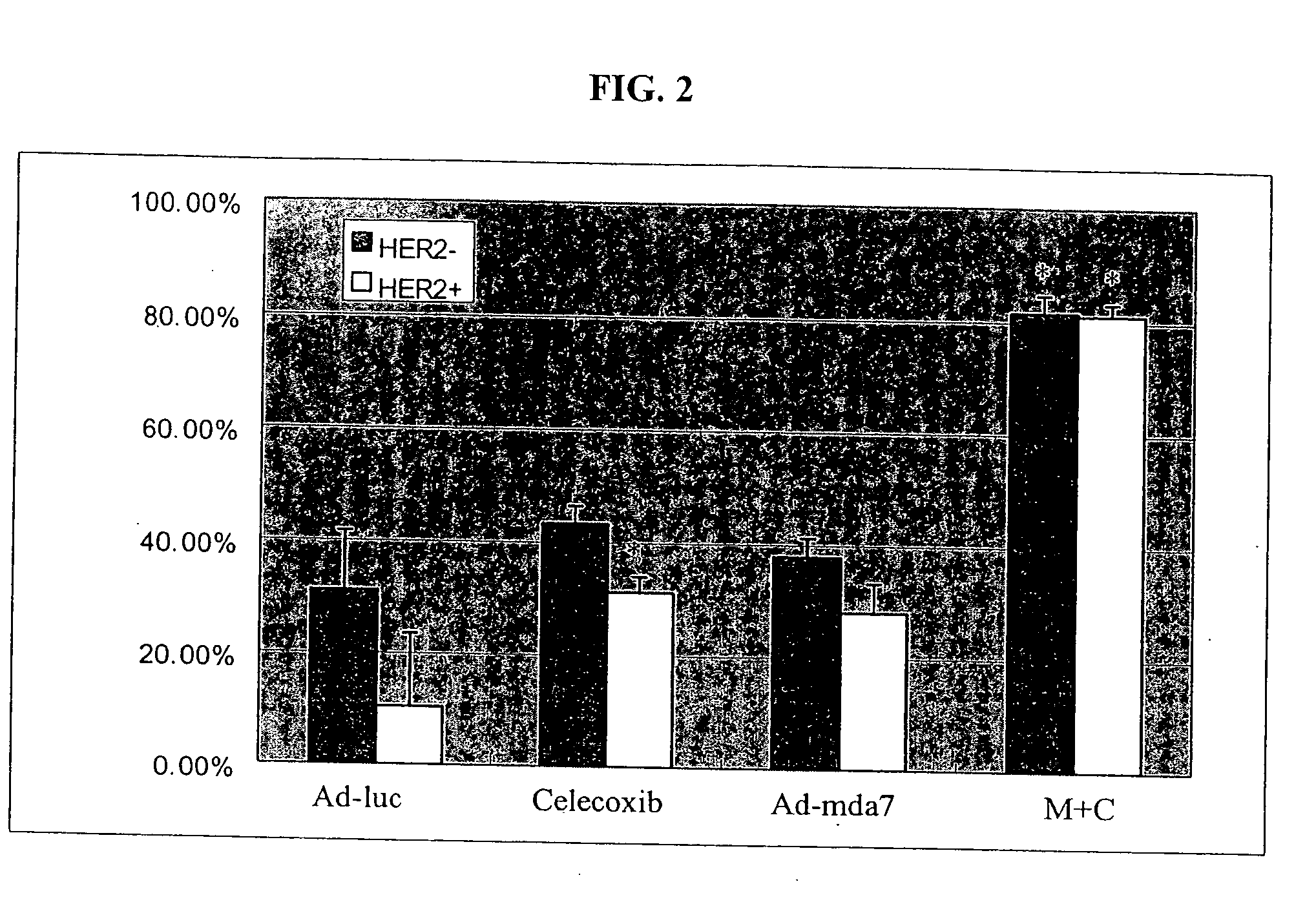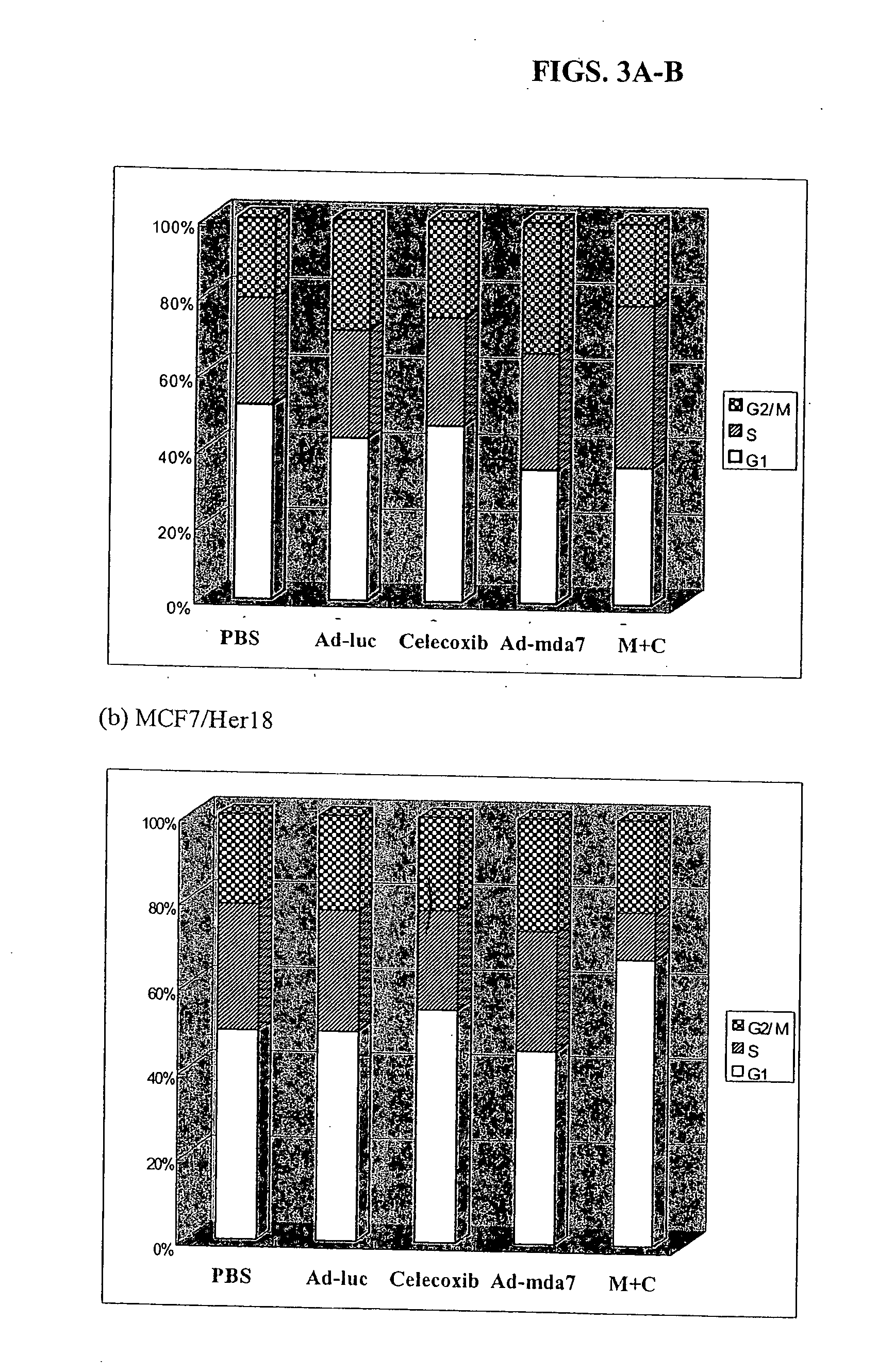Compositions and methods involving MDA-7 for the treatment of cancer
- Summary
- Abstract
- Description
- Claims
- Application Information
AI Technical Summary
Benefits of technology
Problems solved by technology
Method used
Image
Examples
example 1
Synergistic Tumoricidal Effect with Celecoxib and AD-MDA7
[0443] A. Materials and Methods
[0444] 1. Cell Lines
[0445] Estrogen receptor positive MCF7 cells engineered to express elevated levels of HER-2 / neu (MCF7 / Her18 cells) were a gift from Dr. Mien-Chie Hung. The estrogen receptor negative and HER-2 / neu-nonoverexpressing MDA-MB-436 human breast cancer cells were obtained from the American Type Culture Collection (ATCC, Manassas, Va.). The cells were maintained in high glucose DMEM / F-12 media supplemented with 10% fetal bovine serum with 10 mM L-glutamine, 100 U / ml penicillin, and 100 μg / ml streptomycin (GIBCO Invitrogen Corporation, Grand island, NY) in a humidified 37° C., 5% CO2 atmosphere.
[0446] 2. Adenovirus Transduction & Celecoxib Treatment
[0447] The recombinant adenovirus vectors carrying the mda-7 gene (Ad-mda7) and the luciferase reporter gene (Ad-luc) were obtained from Introgen Therapeutics (Introgen Therapeutics, Houston, Tex.). 1×106 cells in 100-mm culture plates ...
example 2
Radiosensitization with MDA7 and Celecoxib
[0475] A. Materials and Methods
[0476] MDA-MB-436 and MDA-MB-468 human breast cancer cells (see Example 1) were exposed to different doses of radiation with or without pretreatment with Ad-mda7 alone, celecoxib alone, or the combination of both for three days prior to irradiation. The cells were assayed for clonogenic survival to compare the radiosensitizing effect of three different treatment arms. Flow cytometry and cell cycle analysis were performed to access cell cycle changes and induction of apoptosis. Statistical evaluation was done by student's t-test.
[0477] B. Results
[0478] The clonogenic survival assay showed that the combination of Ad-mda7 and celecoxib significantly enhanced tumor cell radiosensitization in both breast cancer cell lines. At the sublethal dose, less than 50% tumoricidal effect of celecoxib (50 μM for MB436 and 30 μM for MB468) and Ad-mda7 (multiplicity of infection (MOI) of 1,000 for MB436 and 2,000 for MB468),...
example 3
Enhancement of AD-MDA7 Cell Killing with Geldanamycin and its Analog
[0479] A. Materials and Methods
[0480] 1. Cell Lines and Reagents
[0481] A549 and H460 human lung cancer cell lines were obtained from the American Type Culture Collection. All cells were maintained in RPMI 1640 supplemented with 10% fetal bovine serum, 10 mM glutamine, 100 units / ml penicillin, 100 μg / ml streptomycin (Life Technologies, Inc., Grand Island, N.Y.) in a 5% CO2 atmosphere at 37° C. Geldanamycin (GA) was obtained from Calbiochem (San Diego, Calif.). 17-allyl-aminogeldanamycin (17AAG) was kindly provided by Dr. Nguyen Dao (National Cancer Institute, Bethesda, Md.). 17AAG was formulated in DMSO (Sigma Chemical Co., St. Louis, Mo.) as 10-mM stock solutions, and stored at −20° C. Final working solutions were diluted in medium to contain <0.01% of DMSO. All experiments using this compound were performed under subdued lighting conditions.
[0482] 2. Adenovirus Production
[0483] Constructions of the Ad-mda7, Ad...
PUM
| Property | Measurement | Unit |
|---|---|---|
| Mass | aaaaa | aaaaa |
| Fraction | aaaaa | aaaaa |
| Fraction | aaaaa | aaaaa |
Abstract
Description
Claims
Application Information
 Login to View More
Login to View More - R&D
- Intellectual Property
- Life Sciences
- Materials
- Tech Scout
- Unparalleled Data Quality
- Higher Quality Content
- 60% Fewer Hallucinations
Browse by: Latest US Patents, China's latest patents, Technical Efficacy Thesaurus, Application Domain, Technology Topic, Popular Technical Reports.
© 2025 PatSnap. All rights reserved.Legal|Privacy policy|Modern Slavery Act Transparency Statement|Sitemap|About US| Contact US: help@patsnap.com



